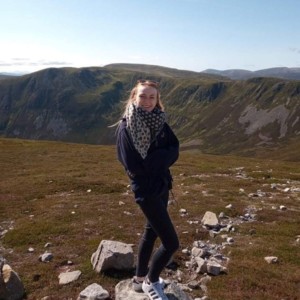
Marie Marsden
University of Birmingham
Project
The stratigraphy and dinosaur palaeontology of the Wealden Group, Isle of Wight
Supervisors
- Prof. Richard Buter
- Dr Susannah Maidment
- Dr James Wheeley
- Dr Catherine Russell
- Dr Oliver Wakefield
PhD Summary
The Wealden Group of the Isle of Wight is a group of fluvial and shallow marine sedimentary rocks deposited during the Early Cretaceous and is renowned for its dinosaur fossils, yielding the most diverse assemblage of species in the UK. However, the sediments themselves are poorly studied in terms of modern techniques. Consequently, the depositional environments the sediments represent and the distribution of age in the sediments (the chronostratigraphy) are not well understood, which hinders our ability to study the evolution and palaeoecology of the dinosaurs on the Isle of Wight.
This project aims to examine the relationship between dinosaur remains, sedimentary facies and the chronostratigraphy of the Wealden Group on the Isle of Wight. This will be done through detailed facies analysis of outcrops across the island and will culminate in the first chronostratigraphic framework for the Isle of Wight Wealden Group. Dinosaur occurrences across the island will be located to see if particular species can be correlated to particular depositional sequences, which will allow us to examine if preservational bias is hampering our study of dinosaur diversity and distribution and may also help predict the location of future sites. Finally, the chronostratigraphic framework will be used to see if particular dinosaur species correlate to specific periods in time, ultimately allowing us to better study and understand the evolution and palaeoecology of the Isle of Wight dinosaurs.
Previous activity
Before starting my PhD, I undertook an Integrated Masters in Earth Science at the University of St Andrews. Growing up near Aberdeen, I initially planned to go into petroleum exploration, however during my time at St. Andrews I found I was particularly interested in how sedimentary geology could be used instead to reconstruct past environments. Graduating in 2020 into the pandemic made finding relevant work difficult and I spent a year working in a shop and café, which made me realise that I missed academia and ultimately inspired me to actively pursue a career as a researcher in the Earth Sciences.
Why did you choose doctoral research?
I decided to undertake doctoral research because it allowed me to continue researching, which was something I found to be extremely rewarding during my previous degree. This project is hugely exciting as it offers an opportunity to continue to investigate the sediments of the Isle of Wight Wealden Group which I worked on as a part of my final-year research dissertation, to work in my field of interest of reconstructing past environments through sedimentology, and to study the “age of the dinosaurs” – an intriguing time of Earth history where there is a huge amount of scientific and public interest but also still a lot questions to be answered.
Why did you choose CENTA?
One of the key aspects that interested me in a CENTA studentship was the connections it provided to multiple institutions through my team of supervisors. As well as providing access to an excellent pool of experience and knowledge relevant to my project through the supervisors themselves, this also means I benefit from access to a wide variety of resources and networks through the different universities and partner organisations.
Future plans
Currently I plan to stay in research, so a CENTA studentship will undoubtedly help my future prospects. The wide variety of training and support provided – from project-specific to personal development – is hugely beneficial as it will impart the necessary skills and experiences to become an effective and well-rounded researcher. Furthermore, working as part of a cohort with such diverse research interests will be extremely valuable as it provides a fundamental understanding and appreciation of a wide range of different topics as well as creating connections to academics working in different fields, allowing me to tackle future research questions through a much more multi-disciplinary approach.
